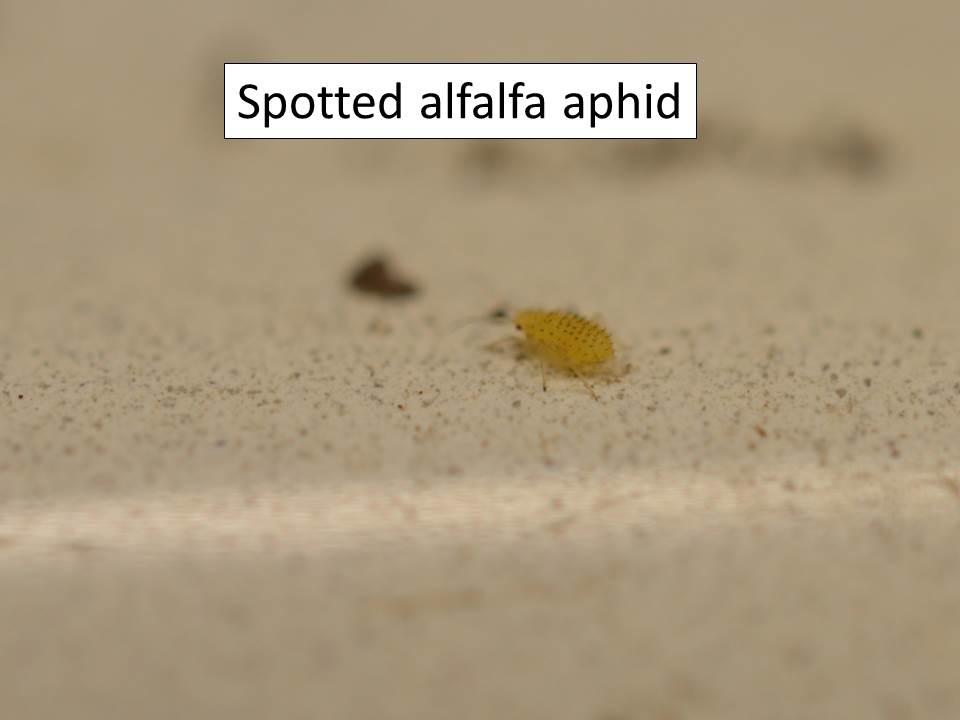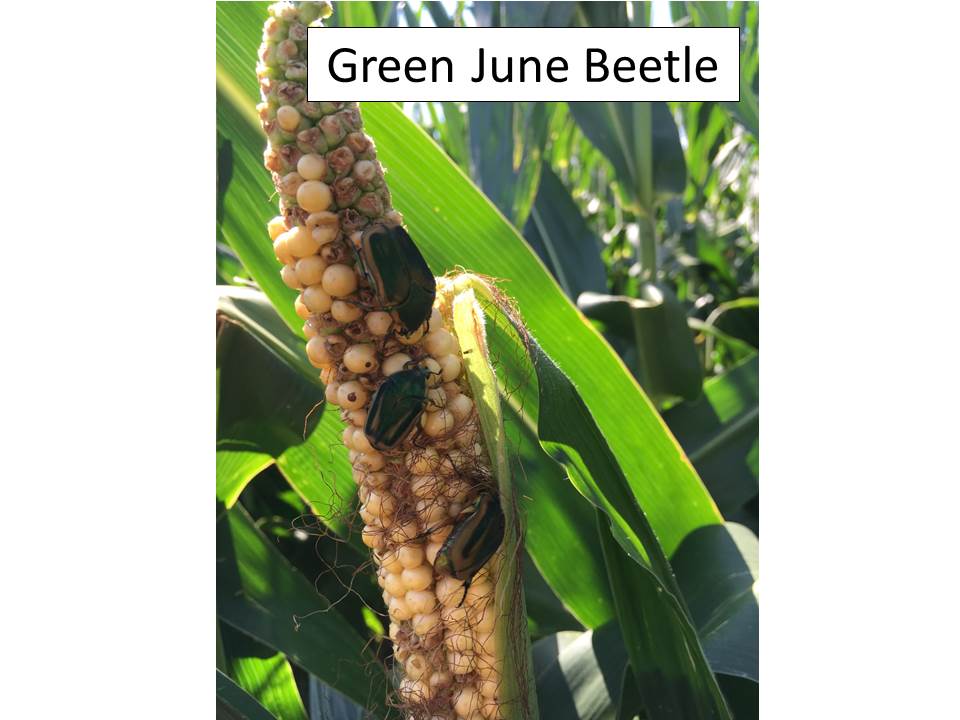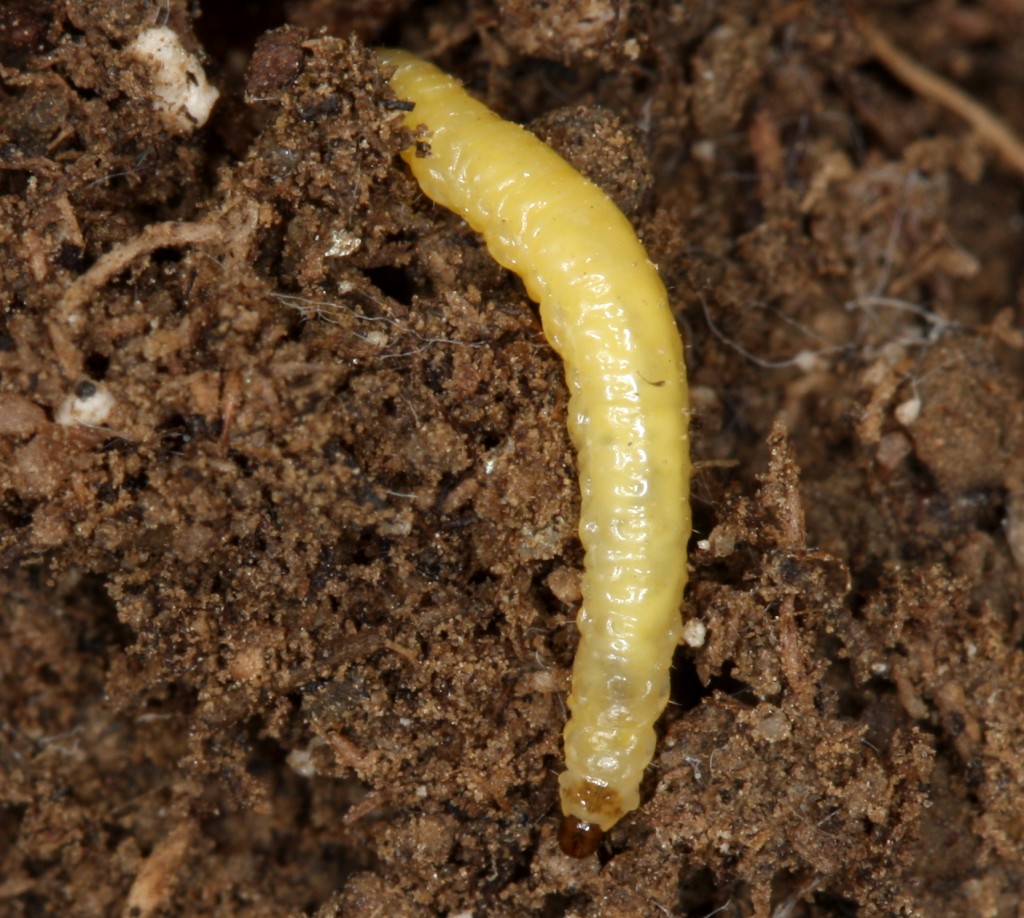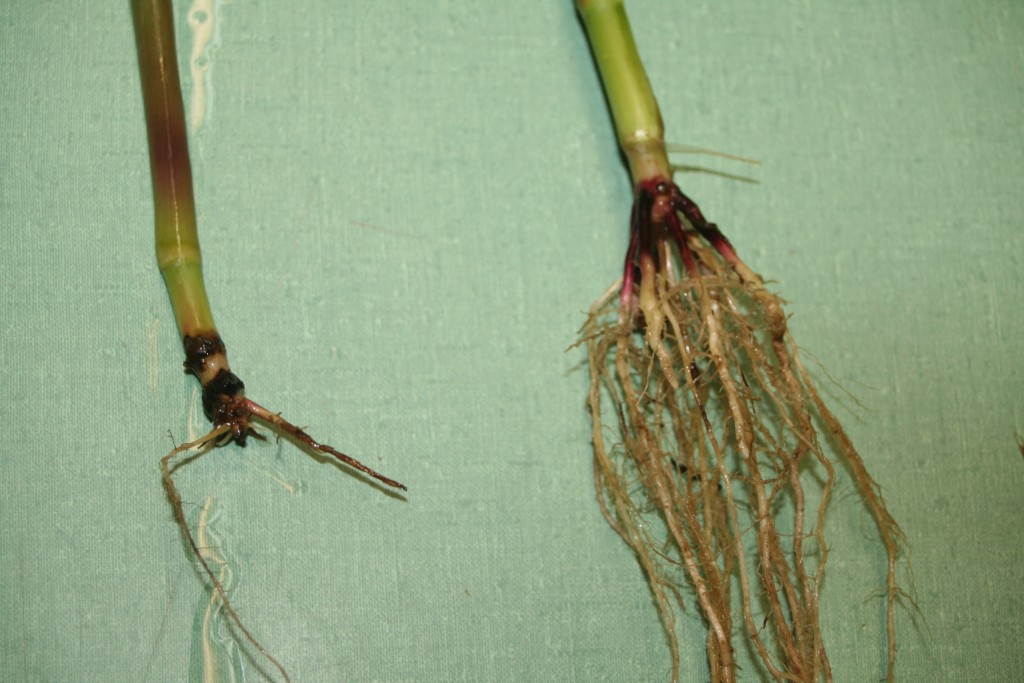–by Dr. Bob Bauernfeind
I have been following Ward Upham’s weekly recordings of reported “pest concerns”. And occasionally, iris plants have been mentioned. Of course as an entomologist, my interest would be iris borers. Where-oh-where would I find iris borers? Well, I never have to look any further than the iris bed along the north side of my house. I have purposely allowed them free reign for the past several years —- and they haven’t failed me.
Iris borers are the caterpillars of iris borer moths. While described as being drab tan moths, they really are exquisitely patterned and colored —- at least if one really takes a close look. People rarely see the moths because during their short flight period in fall, they fly at night when mating and depositing overwintering eggs primarily on leaves, and especially at the base of the iris stalks.
As current-season leaves develop (A), newly hatched caterpillars/larvae climb up on the new foliage and create tiny pinholes (B) through which they enter leaves. By splitting leaves at those sites, larvae can be found (C).
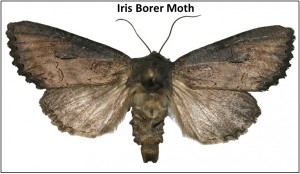
Currently measuring about ¼- inch long, larvae will begin tunneling downwards toward the base of the plant.
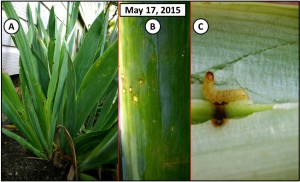
By late summer, caterpillars will measure up to 1½ -inches in length and leave the somewhat restricted confines of the leaf. They will bore into the iris rhizomes to complete their feeding phase, after which they leave the rhizome to enter the soil where they will pupate. This will bring us back full circle to the emergence and mating of moths in the fall and the subsequent deposition of overwintering eggs.
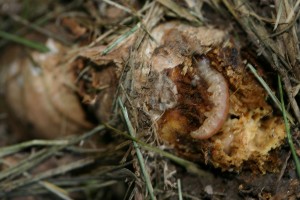
The consequences of iris borers are twofold: current-season foliage becomes discolored with tattering along leaf margins, and leaves dying. Also, the bases of the plants as well as their rhizomes become an oozing mushy smelly mess due to fecal contamination along with the action of bacterial soft rot organisms.
At this current point-in-time, plants can be inspected for leaves displaying the presence of iris borer caterpillars. Due to their current small size, they can be squashed by a person running their finger and thumb along the leaf. Or, that leaf may be cut off and disposed of. If larvae are allowed to continue feeding uninterrupted, the entire plant and possibly the rhizome can eventually be roughed out. This would need to be done before pupation in order to prevent the production of new moths/mating/egg production.
